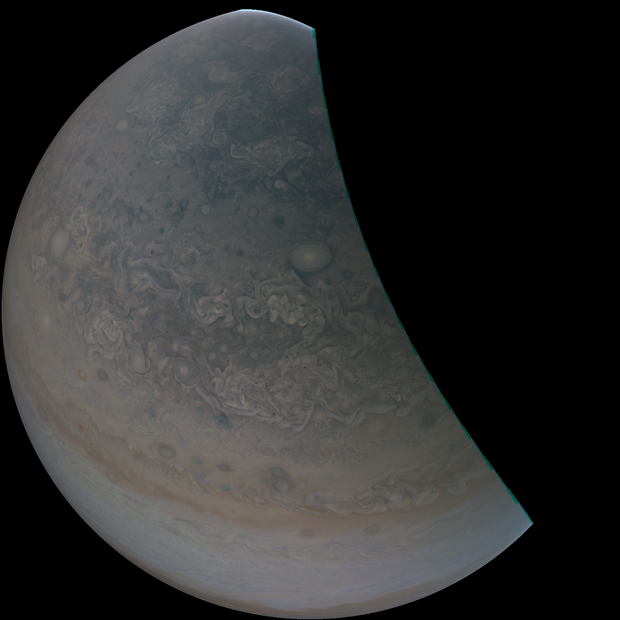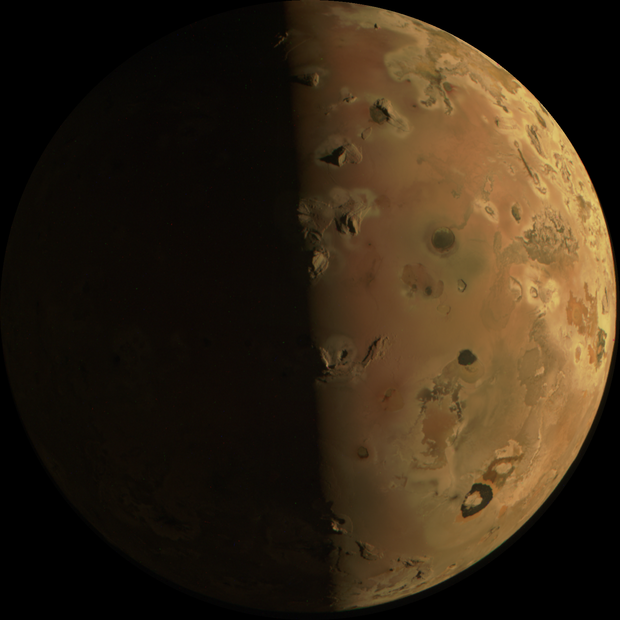NASA Spacecraft Flies Extremely Close To Jupiter's Moon Io, Captures Wild Footage
NASA spacecraft flies extremely close to Jupiter's moon Io, captures wild footage. NASA's Juno spacecraft recently achieved its closest-ever approach to Jupiter's moon Io, getting within 930 miles of the "surface of the most volcanic world." The space agency has released new images from this flyby.
Author:Rhyley CarneyReviewer:Paula M. GrahamJan 04, 202424K Shares321K Views

NASA spacecraft flies extremely close to Jupiter's moon Io, captures wild footage. NASA's Juno spacecraft recently achieved its closest-ever approach to Jupiter's moon Io, getting within 930 miles of the "surface of the most volcanic world." The space agency has released new images from this flyby.
Juno, which has been in orbit around Jupiter since 2016, has been dedicated to studying the gas giant and its various moons. Io, described as a "turbulent world," is home to hundreds of volcanoes, some of which have eruptions powerful enough to be observed from telescopes on Earth. According to NASA, one of Jupiter's 95 moons engages in a "gravitational tug-of-war" with the planet and other nearby moons, resulting in tidal forces that cause the surface to flex by as much as 330 feet.
NASA has not yet processed the data obtained from Juno's flyby of Io, but researchers are eager to gather more information about the volcanoes on the moon. Although some photos from the flyby have been posted online, a detailed analysis of the data is still pending.
"By combining data from this flyby with our previous observations, the Juno science team is studying how Io's volcanoes vary," said Juno's principal investigator, Scott Bolton of the Southwest Research Institute in San Antonio, Texas, in a news release from NASA. "We are looking for how often they erupt, how bright and hot they are, how the shape of the lava flow changes, and how Io's activity is connected to the flow of charged particles in Jupiter's magnetosphere."
All three cameras on the spacecraft were active during the flyby of Io. Using infrared instruments, the Jovian Infrared Auroral Mapper captured heat signatures given off by the moon's volcanoes. The Stellar Reference Unit captured high-resolution surface images, while the JunoCam, responsible for visible-light color images resembling satellite photographs, provided the images posted online by NASA.
Scheduled for another flyby on February 3, the spacecraft will once again approach within 930 miles of Io's surface. Subsequently, on every other orbit, the spacecraft will conduct a total of 18 flybys throughout Io's mission to Jupiter, progressively moving farther away with each encounter.
“„With our pair of close flybys in December and February, Juno will investigate the source of Io's massive volcanic activity, whether a magma ocean exists underneath its crust, and the importance of tidal forces from Jupiter, which are relentlessly squeezing this tortured moon.- Scott Bolton
Conclusion
This data holds the potential to address significant and overarching questions about Io's volcanic characteristics. Scientists hope to uncover whether there exists a vast, expansive magma sea beneath Io's surface, akin to a grandiose global reservoir. Alternatively, they are exploring the possibility that the moon's lava flows result from a process more analogous to Earth's, where substantial heat flows beneath the rigid crust, specifically in the upper mantle, leading to the eruption of magma onto the surface in distinct regions.
Jump to

Rhyley Carney
Author

Paula M. Graham
Reviewer
Latest Articles
Popular Articles
